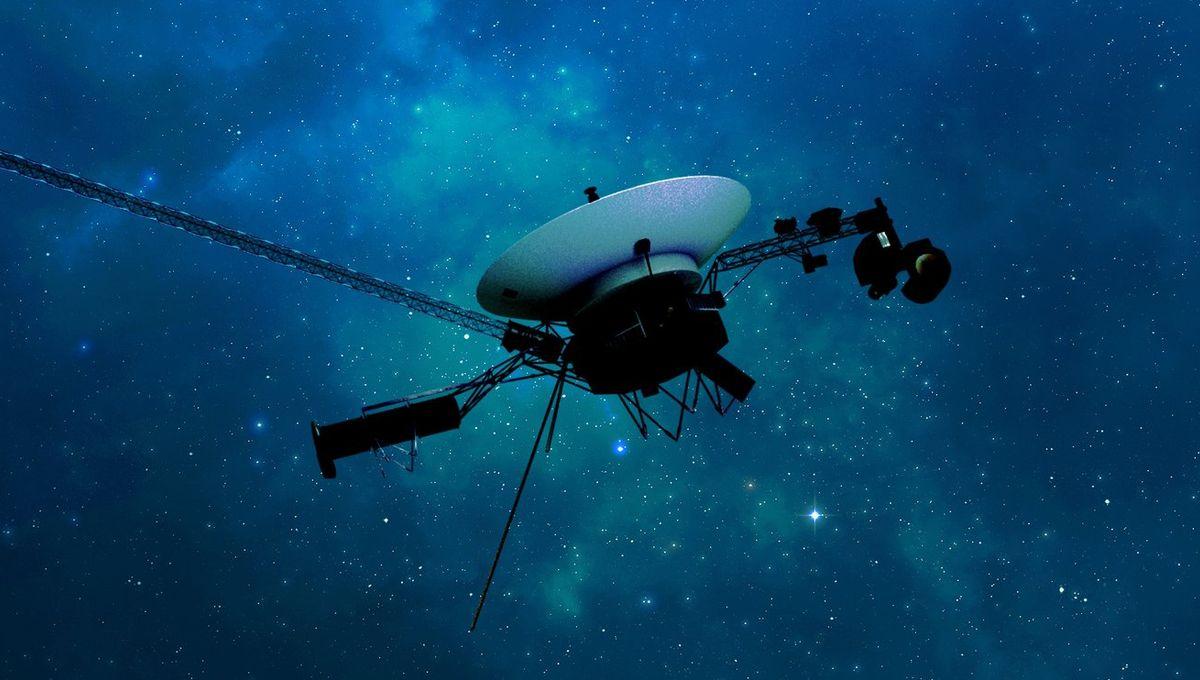-
Новости
- ИССЛЕДОВАТЬ
-
Страницы
-
Статьи пользователей
-
Форумы
Voyager 1 Launched 48 Years Ago Today, So NASA Shares Archival Footage Of Carl Sagan To Celebrate

Voyager 1 Launched 48 Years Ago Today, So NASA Shares Archival Footage Of Carl Sagan To Celebrate
Forty-eight years ago today, Voyager 1 blasted off from Earth, beginning its epic journey through our Solar System and beyond. It’s still out there, over 25 billion kilometers (15 billion miles) from its home planet, hurtling through interstellar space at 61,196 kilometers (38,026 miles) per hour.
The rest of this article is behind a paywall. Please sign in or subscribe to access the full content. To celebrate the anniversary of the spacecraft’s launch, NASA’s Jet Propulsion Laboratory has released an archival video (below) of an incredible press conference given in June 1990 following the end of the mission’s planetary explorations. Ed Stone, the longtime project scientist of NASA’s Voyager mission, shares some wise words, followed by a presentation by the man himself: Carl Sagan. The legendary scientist played a major role in the Voyager mission and was a key member of its imaging team. The recently shared video shows Sagan unveiling the iconic “Pale Blue Dot” for the first time, a powerful image showing Earth as a tiny, fragile dot hovering in the vast emptiness of space. “This is where we live – on a blue dot,” Sagan said. “That’s where everyone you know and everyone you have heard of and every human being who ever lived lived out their life. It’s a very small stage in a great cosmic arena. And again, just speaking for myself, I think this perspective underscores our responsibility to preserve and cherish that blue dot, the only home we have.” Sagan was also a major advocate of the Golden Records placed on the Voyager spacecrafts – two phonograph records that contain sounds and images of life on Earth, designed to act as a time capsule for intelligent extraterrestrial life or future humans. NASA’s Voyager 1 spacecraft was launched on September 5, 1977, from Cape Canaveral in Florida with the aim of studying Jupiter and Saturn up close. Although Voyager 2 launched first on August 20, Voyager 1 was placed on a faster trajectory toward Jupiter. It overtook its twin on December 15, 1977, hence why the numbering seems reversed. After gathering intimate information about Jupiter and Saturn, Voyager 2 went on to fly by Uranus in 1986 and Neptune in 1989 on an extended mission that yielded other key findings. To this day, it remains the only spacecraft to visit these two planets. The most famous imagery from Voyager missions, such as the “Pale Blue Dot” and the “Solar System Family Portrait”, didn’t come until 1990. On February 14, Voyager 1 led the photoshoot from the heart of the Solar System, taking images of Neptune, Uranus, Saturn, Mars, the Sun, and then Jupiter, Earth, and Venus. Its camera was then powered off forever. But its generators kept running. The Voyager spacecrafts are powered by radioisotope thermoelectric generators (RTGs), which work by converting the heat released from the natural radioactive decay of plutonium-238 into electricity. The plutonium is stored in a ceramic form for safety, and as it gives off heat, thermocouples inside the RTG transform that heat directly into electric power, with no moving parts. In 2012, Voyager 1 exited the heliosphere, the literal edge of the Solar System, and entered interstellar space. Voyager 2 followed its lead by crossing this boundary in 2018. The duo has had a few technical upsets in the past few years, but they continue to send back faint but invaluable signals across the vast expanse, and engineers expect them to remain in contact with Earth until around 2036. Keep on going, Voyagers. It’s been an absolute pleasure so far.


